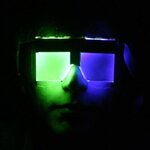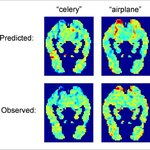Neuroscience

A new study in Neuroscience Letters says that short-wavelength light, including natural light from a blue sky, is highly effective at stimulating the circadian system while exposure to other wavelengths — and thus colors — of light may necessitate longer exposure times or require higher exposure levels to be as effective at stimulating our biological clocks.
In some instances, exposure to multiple wavelengths (colors) of light simultaneously can result in less total stimulation to the circadian system than would result if either color were viewed separately, a phenomenon known as "spectral…

Mind readers have long been the domain of folklore and science fiction. But some new findings demonstrate the power of computational modeling to improve our understanding of how the brain processes information and thoughts and it brings scientists closer to knowing how specific thoughts activate our brains.
In their most recent work a computer scientist, Tom Mitchell, and a cognitive neuroscientist, Marcel Just, both of Carnegie Mellon University, used fMRI data to develop a sophisticated computational model that can predict the brain activation patterns associated with concrete nouns, or…

Food may not be the major cause of hyperactivity in children. Genetics, brain function and parental actions such as smoking may be just as important.
ADHD (attention deficit/hyperactivity disorder) has a strong genetic link, with half the children born of parents with diagnosed ADHD likely to develop the disorder themselves. Chemical imbalances in the brain are also involved and studies have found that children with the condition have on average 4% smaller brains. Genes may interact with environmental toxins such as alcohol in the womb, lead, and parental smoking to cause later problems with…

New imaging research shows that brain activity differs in sleep-deprived and well-rested people. The study, in the May 21 issue of The Journal of Neuroscience, shows that individuals who are sleep-deprived experience periods of near-normal brain function, but these periods are interspersed with severe drops in attention and visual processing.
They have shown for the first time what happens to the visual perceptions of healthy but sleep-deprived volunteers who fight to stay awake, like people who try to drive through the night. The scientists found that even after sleep deprivation, people…

A "CatCam” that captures feline-centric video of a forest and a new mathematical model are two elements of a new effort to explain how the brain’s visual circuitry processes real scenes.
The new model of the neural responses of a major visual-processing brain region promises to significantly advance understanding of vision.
The researchers sought to develop the new model because until now, studies of the visual system have used simple stimuli such as dots, bars and gratings.
Specifically, the researchers sought to model the neuronal response the lateral geniculate nucleus (LGN) in the…

Assistant Professor of Cognitive Science at Rensselaer Polytechnic Institute Mark Changizi says that actions like catching a football or easily moving through a room full of people requires something more than quickly responding to a situation — it requires our ability to foresee the future.
It takes our brain nearly one-tenth of a second to translate the light that hits our retina into a visual perception of the world around us. While a neural delay of that magnitude may seem minuscule, imagine trying to catch a ball or wade through a store full of people while always perceiving the very…

New research appearing in the May issue of Psychological Science suggests that being put in a low-power role may impair a person’s basic cognitive functioning and thus, their ability to get ahead.
Pamela Smith of Radboud University Nijmegen and colleagues Nils B. Jostmann of VU University Amsterdam, Adam Galinsky of the Kellogg School of Management at Northwestern University, and Wilco W. van Dijk of VU University Amsterdam, focus on a set of cognitive processes called executive functions. Executive functions help people maintain and pursue their goals in difficult, distracting situations.…

For the first time, a study combines measurements of abnormalities in the eye with models for assessing how well an individual can see, meaning it may be possible to program a machine to automatically produce prescriptions for corrective lenses.
The model for predicting visual clarity — based on measurements taken by today’s highly accurate aberrometers — could also enable surgeons to more accurately assess and correct the vision of patients undergoing lasik or refractive surgery.
New technology in aberrometers means ophthalmologists and others can accurately measure refractive error and…

The risks of developing Alzheimer’s disease differ between the sexes, with stroke in men, and depression in women, critical factors, according to research published in the Journal of Neurology Neurosurgery and Psychiatry.
French researchers based their findings on almost 7000 people over the age of 65, drawn from the general population in three French cities. None had dementia, but around four out of 10 were deemed to have mildly impaired mental agility (mild cognitive impairment) at the start of the study.
Their progress was assessed two and four years later. In all, just over 6.5% of…

Research by Yale scientists shows that males and females have essentially unisex brains — at least in flies — according to a recent report in Cell designed to identify factors that are responsible for sex differences in behavior.
The researchers showed that a courting “song and dance” routine that only male flies naturally perform — one wing is lifted and wiggled to make a humming “song” — can also be triggered in female flies by artificially stimulating particular brain cells that are present in both sexes. It isn’t what you’ve got — it’s how you use it, the authors say.
“It appears there is…